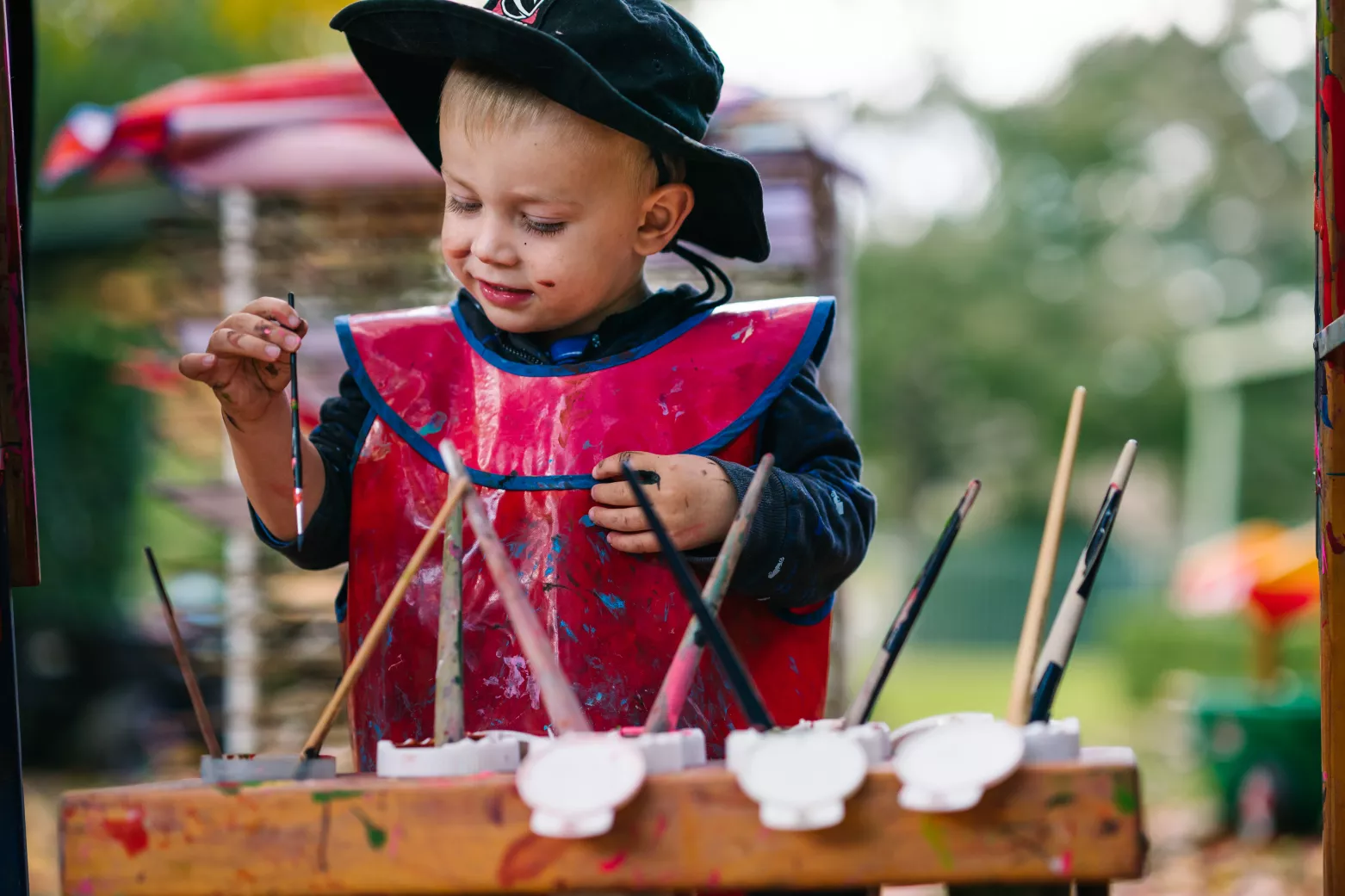- Home
- BELONGING, BEING & BECOMING - THE EARLY YEARS LEARNING FRAMEWORK
- (EYLF) A VISION FOR CHILDREN'S LEARNING
- (EYLF) Elements of the Framework
Table of contents
- BELONGING, BEING & BECOMING - THE EARLY YEARS LEARNING FRAMEWORK
- (EYLF) INTRODUCTION
- (EYLF) A VISION FOR CHILDREN'S LEARNING
- (EYLF) ELEMENTS OF THE EARLY YEARS LEARNING FRAMEWORK
- (EYLF) EARLY CHILDHOOD PEDAGOGY
- (EYLF) PRINCIPLES
- (EYLF) PRACTICES
- (EYLF) THE EARLY YEARS LEARNING FRAMEWORK PLANNING CYCLE
- (EYLF) LEARNING OUTCOMES
- (EYLF) GLOSSARY OF TERMS
- (EYLF) REFERENCES
Need help using the guide? Visit our help section.
(EYLF) Elements of the Framework
The Framework puts children’s learning at the core and comprises interdependent elements: Vision, Principles, Practices and Learning Outcomes (see Diagram 1). All elements are fundamental to early childhood pedagogy and effective curriculum decision-making.
Curriculum encompasses all the interactions, experiences, routines and events, planned and unplanned, that occur in an environment designed to foster children’s learning, development and wellbeing.
Children are receptive to a wide range of experiences. What is included or excluded from the curriculum affects how children learn, develop and understand the world.

The Framework supports curriculum decision-making as a continuous cycle of planning, assessment and critical reflection. This involves educators knowing the children, families and community contexts and drawing on their professional knowledge to plan for individual children and groups. These plans are implemented, evaluated and reflected upon to inform further planning.
Working in partnership with children and families, and communities, teachers in schools, and other professionals, educators use the Vision, Principles, Practices and Learning Outcomes to guide their planning for children’s learning, development and wellbeing. To actively engage children, educators identify children’s strengths, choose appropriate teaching strategies and content, design the learning environment, and collaborate with children to co-construct learning. Educators build an engaging child-centred curriculum when they plan, analyse and assess children’s learning and critically reflect and evaluate planning and practice for and with children.